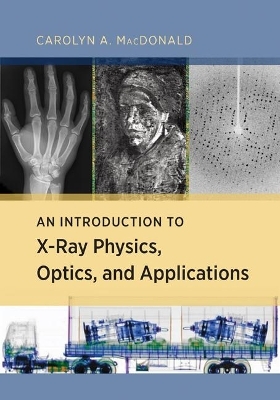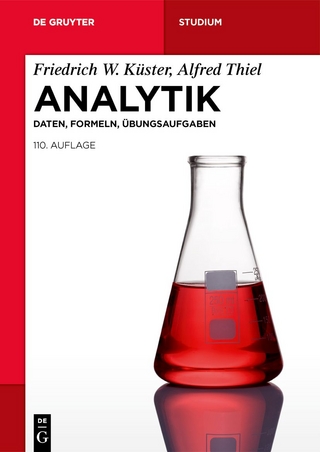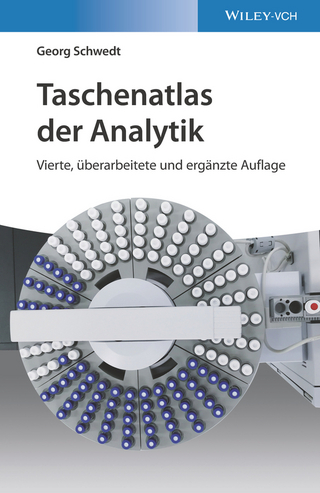
An Introduction to X-Ray Physics, Optics, and Applications
Princeton University Press (Verlag)
978-0-691-13965-4 (ISBN)
Based on a course for advanced undergraduates and graduate students in physics and related sciences and also intended for researchers, An Introduction to X-Ray Physics, Optics, and Applications offers a thorough survey of the physics of x-ray generation and of interaction with materials. * Common aspects of diverse phenomena emphasized* Theoretical development tied to practical applications * Suitable for advanced undergraduate and graduate students in physics or related sciences, as well as researchers* Examples and problems include applications drawn from medicine, astronomy, and materials analysis* Detailed solutions are provided for all examples and problems
Carolyn A. MacDonald is professor and former chair of physics at the University at Albany and the director of the Ualbany Center for X-ray Optics. She is an associate editor of the Handbook of Optics.
Preface xiii Acknowledgments xv List of Constants and Variables xvii PART I. FOUNDATIONS 1. INTRODUCTION 3 1.1 The discovery 3 1.2 What is an x ray? 4 1.3 What makes x rays useful? 6 1.4 The layout of the text 8 1.5 The elusive hyphen 8 Problems 8 Further reading 9 2. A CASE STUDY: NUCLEAR MEDICINE 10 2.1 Metastable emitters and half-life 10 2.2 A brief introduction to nuclear decay 13 2.3 Nuclear medicine 14 2.4 Photon detection and scatter rejection 20 2.5 Photon statistics 22 2.6 SPECT 24 Problems 27 Further reading 29 PART II. X-RAY GENERATION 3. THERMAL SOURCES AND PLASMAS 33 3.1 Blackbody radiation 33 3.2 Generation of very hot plasmas 35 3.3 Plasma frequency 37 3.4 Debye length 40 3.5 Screening and the Debye length 41 3.6 Fluctuations and the Debye length 42 Problems 42 Further reading 43 4. CHARACTERISTIC RADIATION, X-RAY TUBES, AND X-RAY FLUORESCENCE SPECTROSCOPY 44 4.1 Introduction 44 4.2 Core atomic levels 45 4.3 Characteristic spectra 48 4.4 Emission rates and intensity 50 4.5 Auger emission 52 4.6 Line widths 53 4.7 X-ray fluorescence 55 Problems 65 Further reading 67 5. SOURCE INTENSITY, DIVERGENCE, AND COHERENCE 68 5.1 Intensity and angular intensity 68 5.2 Photon intensity and photon angular intensity 73 5.3 Brightness and brilliance 75 5.4 Global divergence 79 5.5 Local divergence 80 5.6 X-ray tube design 82 5.7 Coherence 84 5.8 Spatial coherence 86 5.9 Temporal coherence 90 5.10 In-line phase imaging 92 Problems 93 Further reading 94 6. BREMSSTRAHLUNG RADIATION AND X-RAY TUBES 95 6.1 Field from a moving charge 95 6.2 Radiation from an accelerating (or decelerating) charge 95 6.3 Emission from a very thin anode 98 6.4 Emission from a thick anode 101 6.5 Efficiency 101 6.6 Thick-target photon emission rate modeling 102 6.7 Spectral shaping 105 Problems 106 Further reading 107 7. SYNCHROTRON RADIATION 108 7.1 Classical (nonrelativistic) orbits 108 7.2 Semiclassical analysis 112 7.3 Relativistic bremsstrahlung 114 7.4 Synchrotrons 117 7.5 Pulse time and spectrum 117 7.6 Insertion devices 121 7.7 Collimation and coherence 125 Problems 126 Further reading 126 8. X-RAY LASERS 127 8.1 Stimulated and spontaneous emission 127 8.2 Laser cavities 130 8.3 Highly ionized plasmas 131 8.4 High-harmonic generation 131 8.5 Free-electron lasers 133 8.6 Novel sources 135 Problems 135 Further reading 136 PART III. X-RAY INTERACTIONS WITH MATTER 9. PHOTOELECTRIC ABSORPTION, ABSORPTION SPECTROSCOPY, IMAGING, AND DETECTION 139 9.1 Absorption coefficients 139 9.2 Attenuation versus absorption 144 9.3 Index of refraction 145 9.4 Absorption coefficient of compounds and broadband radiation 147 9.5 Absorption edges 148 9.6 Absorption spectroscopy 149 9.7 Filtering 151 9.8 Imaging 152 9.8.1 Contrast 152 9.8.2 Dose 154 9.8.3 Noise 154 9.9 Detectors 156 9.10 Tomosynthesis and tomography 160 Problems 161 Further reading 162 10. COMPTON SCATTERING 163 10.1 Conservation laws 164 10.2 Compton cross section 165 10.3 Inverse Compton sources 166 10.4 Scatter in radiography 168 10.5 Contrast with scatter 169 10.6 Scatter reduction 170 Problems 172 Further reading 173 11. COHERENT SCATTER I: REFRACTION AND REFLECTION 174 11.1 Free-electron theory and the real part of the index of refraction 175 11.2 Atomic scattering factor 178 11.3 Phase velocity 179 11.4 Slightly bound electrons and the phase response 180 11.5 Kramers-Kronig relations 182 11.6 Coherent scatter cross section 183 11.7 Relativistic cross section 187 11.8 Snell's law 187 11.9 Reflectivity 190 11.10 Reflection coefficients at grazing incidence 193 11.11 Surface roughness 195 Problems 199 Further reading 200 12. REFRACTIVE AND REFLECTIVE OPTICS 201 12.1 Refractive optics 201 12.2 Reflective optics 206 12.2.1 Elliptical mirrors 206 12.2.2 Wolter optics 209 12.2.3 Capillary optics 211 12.2.4 Polycapillary optics 213 12.2.5 Array optics 219 12.2.6 Energy filtering 223 12.2.7 Optics metrology 223 12.3 Optics simulations 224 Problems 225 Further reading 226 13. COHERENT SCATTER II: DIFFRACTION 227 13.1 Scattering from a single electron 227 13.2 Two electrons 229 13.3 Scattering from an atom: Fourier transform relationships 230 13.4 A chain of atoms 231 13.5 Lattices and reciprocal lattices 233 13.6 Planes 235 13.7 Bragg's law 237 13.8 theta-2theta diffractometer 238 13.9 Powder diffraction 238 13.10 Structure factor 242 13.11 Intensity 244 13.12 Defects 246 13.12.1 Mosaicity 246 13.12.2 Thermal vibrations 247 13.12.3 Crystal size 249 13.12.4 Amorphous materials 250 13.13 Resolution 251 13.13.1 The effect of angular broadening 251 13.13.2 Energy spread 252 13.13.3 Global divergence and aperture size 253 13.13.4 Local divergence 253 Problems 254 Further reading 255 14. SINGLE-CRYSTAL AND THREE-DIMENSIONAL DIFFRACTION 256 14.1 The Ewald sphere 256 14.2 The theta-2theta diffractometer and the Rowland circle 257 14.3 Aside: Proof that the angle of incidence is always thetaB on the Rowland circle 260 14.4 Beam divergence 261 14.5 Texture and strain measurements 262 14.6 Single-crystal diffraction 264 14.7 Laue geometry 268 14.8 Protein crystallography 269 14.9 The phase problem 270 14.10 Coherent diffraction imaging 271 14.11 Dynamical diffraction 271 Problems 273 Further reading 273 15. DIFFRACTION OPTICS 274 15.1 Gratings 274 15.2 Zone plates 279 15.3 Crystal optics and multilayers 288 15.3.1 Monochromators 288 15.3.2 Multilayer optics 289 15.3.3 Curved crystals 294 Problems 298 Further reading 298 Appendix: Solutions to End-of-Chapter Problems 299 Chapter 1 299 Chapter 2 299 Chapter 3 303 Chapter 4 306 Chapter 5 311 Chapter 6 314 Chapter 7 320 Chapter 8 323 Chapter 9 323 Chapter 10 326 Chapter 11 328 Chapter 12 330 Chapter 13 331 Chapter 14 334 Chapter 15 336 Index 339
| Erscheinungsdatum | 14.06.2017 |
|---|---|
| Zusatzinfo | 36 color illus. 215 line illus. 5 tables. |
| Verlagsort | New Jersey |
| Sprache | englisch |
| Maße | 178 x 254 mm |
| Gewicht | 992 g |
| Themenwelt | Naturwissenschaften ► Chemie ► Analytische Chemie |
| Naturwissenschaften ► Physik / Astronomie ► Hochenergiephysik / Teilchenphysik | |
| Naturwissenschaften ► Physik / Astronomie ► Optik | |
| Technik | |
| ISBN-10 | 0-691-13965-2 / 0691139652 |
| ISBN-13 | 978-0-691-13965-4 / 9780691139654 |
| Zustand | Neuware |
| Informationen gemäß Produktsicherheitsverordnung (GPSR) | |
| Haben Sie eine Frage zum Produkt? |
aus dem Bereich


